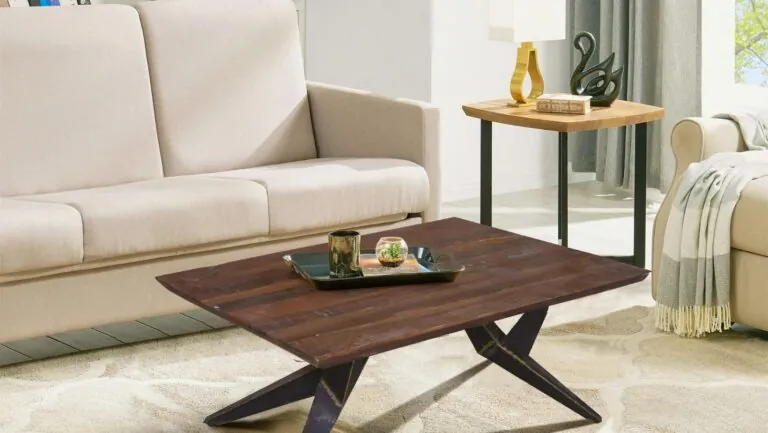Packing doesn’t have to feel like a scene from a horror movie. Instead of diving into chaos, why not tackle it room by room? This method not only keeps things organized but also prevents that dreaded “where’s my favorite sock?” moment when you’re knee-deep in cardboard boxes.
Table of Contents
ToggleBenefits Of Packing Room By Room
Packing room by room offers numerous advantages during the moving process. This approach ensures a systematic strategy that helps in managing belongings effectively.
Reduces Stress
Packing room by room significantly reduces stress. Organizing items by space allows individuals to focus on one section at a time, making the task less overwhelming. Completing one room provides a sense of accomplishment that motivates further packing. Finding essential items becomes easier when each room’s contents are contained in designated boxes. Peace of mind comes from knowing where belongings are located, helping to eliminate the feeling of chaos. A clear packing plan promotes a more relaxed atmosphere during what can often be a hectic time.
Increases Organization
Increased organization results from packing room by room. Each room’s items can be categorized, ensuring that like items stay together. This method simplifies unpacking, as individuals can direct their efforts to one area at a time rather than searching through mixed boxes. Labeling boxes by room enables an efficient loading strategy for the moving vehicle. Improved organization leads to enhanced efficiency, contributing to a smoother transition into a new home. Keeping track of which items belong to which room streamlines the entire moving experience, saving time and minimizing errors.
Tips For Packing Room By Room
Packing room by room creates a streamlined approach to moving. This method enhances organization and eases the transition into a new home.
Start With Unused Spaces
Unused spaces often hold items that don’t require immediate access. Begin packing these areas, such as attics, basements, and closets, to clear clutter. Seasonal items or rarely used appliances can pack first. Removing these possessions frees up space and reduces packing stress. Completing this task early keeps the process manageable and allows focus on everyday essentials later.
Labeling Everything
Labeling each box saves time and reduces confusion. Clearly mark boxes with room names and a list of contents. Include handling instructions like “ fragile” or “this side up” for added clarity. Different colors for labels can also enhance visual organization. When unpacking, labeled boxes make it easy to find necessary items right away. Using this system facilitates a smooth transition into each new space.
Strategies For Different Rooms
Packing room by room maximizes efficiency and eases the transition to a new home. Each room presents unique challenges and organization strategies.
Packing The Bedroom
Begin by sorting clothing into categories, such as seasonal, everyday, and special occasion garments. Use sturdy boxes to pack unworn clothes, and ensure essentials are accessible. Place shoes in separate boxes to prevent scuffing. When packing accessories, utilize small containers to keep jewelry tangles-free. Label boxes clearly to indicate room and contents. Prioritize delicate items, wrapping them in bubble wrap to protect against damage.
Packing The Kitchen
Evaluate kitchen items based on necessity and frequency of use. Start by packing rarely used appliances and specialty items. Use dish packs for fragile dishes and glassware, wrapping each item individually for maximum protection. Non-perishable food items can also be sorted and packed, discarding expired products before packing. Clearly label each box with contents and room designation. Group similar items together, such as utensils or pots, for easier unpacking.
Packing The Living Room
Organize books, electronics, and decorations efficiently. Sort books by genre or size, placing them in sturdy boxes to prevent bending. Wrap fragile decorations with protective material. For electronics, gather cables and remotes, labeling them clearly. Consider disassembling furniture if necessary, wrapping screws and small parts in labeled bags attached to the furniture itself. Prioritize packing items frequently used, ensuring easy access during the move.
Packing The Bathroom
Start by decluttering expired items and products no longer needed. Pack daily essentials separately, allowing for easy access during the transition. Use small boxes for toiletries and larger containers for towels and linens. Label each box with contents for quick identification. Avoid packing perishable items, ensuring they remain easily accessible. Prioritize fragile items, wrapping them securely to prevent breakage.
Organizing Your Packing Supplies
Organizing packing supplies sets the foundation for a streamlined packing experience. Gathering essential materials creates efficiency, allowing for effective room-by-room packing.
Essential Packing Materials
Boxes of various sizes are crucial for different items. Sturdy packing tape secures boxes and prevents them from opening during transit. Bubble wrap protects fragile belongings like dishes and glassware. Packing paper serves as an alternative to wrap delicate items. Labeling supplies, such as markers and stickers, ensure clear identification of each box’s contents. Scissors and box cutters expedite the process, while markers in different colors enhance visual organization, making unpacking easier.
Optional Packing Tools
Packing tools offer additional support. Furniture pads protect larger items during transport. Strap downs help keep boxes secure within a moving vehicle. Rolling carts provide mobility for transporting multiple boxes simultaneously. A dolly reduces physical strain, especially for heavy loads. Mattress bags safeguard bedding during travel. Toolkits simplify disassembling larger pieces, making transitions smoother. While optional, these tools contribute significantly to an efficient packing process.
Conclusion
Packing room by room transforms a potentially overwhelming task into a manageable one. This structured method not only minimizes chaos but also enhances organization and efficiency. By focusing on each space individually individuals can maintain clarity and reduce stress during the moving process.
Starting with less frequently used areas helps clear clutter and sets a positive tone for packing. Clear labeling and strategic packing of essential items ensure a smoother transition into the new home. Embracing this approach allows for a more relaxed moving experience ultimately making the journey to a new space enjoyable rather than daunting.




